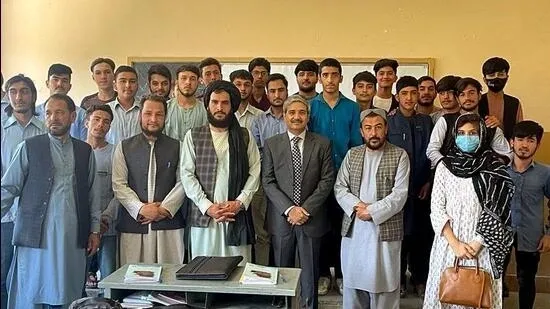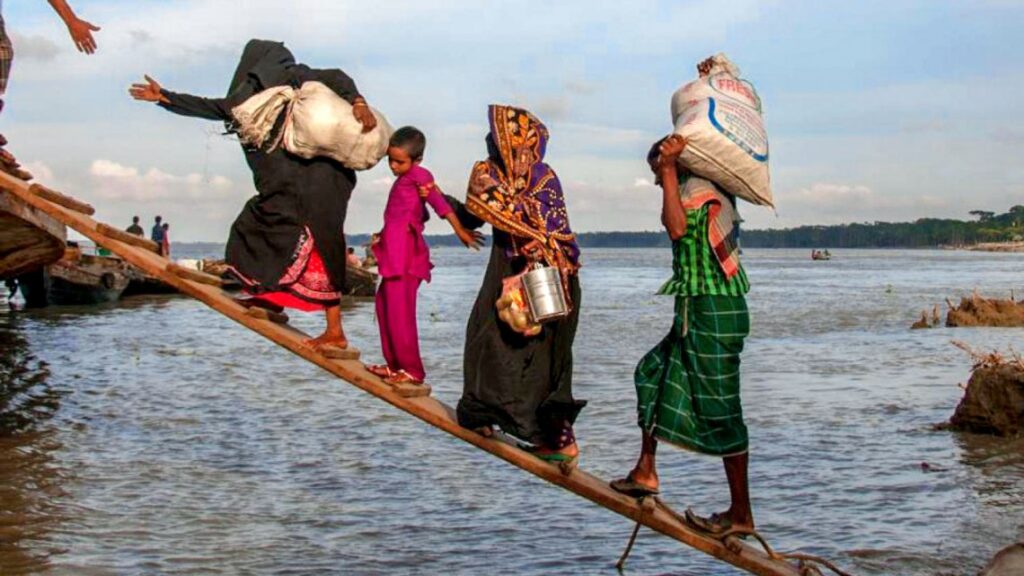
By Nandan Trivedi
One of the greatest challenges facing humanity in the 21st century is climate change. Its impacts, ranging from rising sea levels to extreme weather events, are felt around the world, and are particularly acute in vulnerable countries such as India. As one of the world’s most populous and rapidly developing countries, India is uniquely exposed to the risks posed by climate change, which has the potential to disrupt its economic growth, social stability, and national security. Specifically, I will examine how climate change-related threats to border security, maritime security, food security, energy security, and disaster response could affect India’s national security interests.
And how India could respond to these threats through domestic and international policy measures and contribute to global stability. By doing so, I hope to shed light on the urgent need for a comprehensive and proactive approach to addressing the security risks posed by climate change in the context of Indian foreign and security policy. This article aims to provide insights and recommendations that will be useful to policymakers and practitioners in India, as they grapple with the complex and pressing challenges of climate change and national security.
Border Security:
Climate change-induced environmental degradation, such as desertification and sea-level rise, could lead to mass migration and displacement, potentially resulting in cross-border tensions and conflict. For India, this is a particularly pressing concern, given its large and porous borders with neighbouring countries. For example, in the case of Bangladesh, which is highly vulnerable to climate change, a study by the World Bank found that a potential influx of climate refugees into India could exacerbate existing tensions between the two countries.1 According to the Global Internal Displacement Data of the Internal Displacement Monitoring Centre (IDMC), India is one among those countries having the highest number of new climate change-related displacements in the world, with over 5 million people being displaced in 2021 alone.2
To address this security threat, India could pursue a two-pronged approach. Firstly, it could work with its neighbours to develop regional agreements on climate-induced migration, including protocols on the treatment of refugees and migrants. This would help to mitigate potential conflict and instability by establishing clear rules of engagement and reducing the risk of misunderstandings or miscommunications. Secondly, India could invest in climate adaptation measures in its border regions, such as water conservation and soil erosion prevention, to reduce the vulnerability of local communities to environmental degradation.
India should also invest in developing infrastructure to support climate-resilient communities. This could include building flood protection measures, improving water management systems, and developing sustainable energy sources. India should develop legal frameworks and policies to protect the rights of climate change-induced displaced people.
This could include the development of national laws and policies to provide social protection, housing, and support for displaced people. India should invest in research and development to better understand the impacts of climate change on migration and displacement. This will enable the country to develop more effective strategies to address this issue.
Overall, addressing the issue of climate change-induced displacement and migration requires a comprehensive approach that involves collaboration, early warning systems, infrastructure development, legal frameworks, and research and development.
Maritime Security:

The Indian Ocean is particularly vulnerable to the impacts of climate change, which could lead to increased piracy and maritime security risks. Rising sea levels and ocean acidification, for example, could threaten the livelihoods of coastal communities, leading to increased economic desperation and the potential for criminal activities like transnational organized crime, such as drug trafficking, human trafficking and illegal fishing.
Additionally, as the Arctic ice melts, the Arctic shipping route is increasingly becoming an option, which could increase the shipping traffic in the Indian Ocean, thereby increasing the risks. In response to this, India could explore alternative shipping routes, such as the Northern Sea Route, which could potentially reduce the risks associated with increased maritime traffic in the Indian Ocean.
[The Manohar Parrikar Institute for Defence Studies and Analyses (MP-IDSA), a think tank based in India, in one of the articles titled “Climate Change and Maritime Security in the Indian Ocean Region, Abhijit Singh (2015)” of its Journal of Defence Studies highlights that when it comes to calculating nations’ exclusive economic zones (EEZs), low-water marks are crucial. If sea levels rise significantly, they would fluctuate, resetting baselines and increasing the likelihood of new maritime disputes. Climate change may act as a major catalyst for these disputes.
The same article also states that the impacts of climate change on ports and international commerce will be very challenging. The threat to marine trade and probable port disruptions may entice the maritime forces, who would then need to coordinate their operations.]3
To address this security threat, India could work with other littoral states and maritime partners to ensure the safety and security of the region’s sea lanes. This could involve investing in maritime security infrastructure, such as ports and patrol boats, and developing regional agreements on maritime security, including rules of engagement for naval forces.
For example, as highlighted in one of the articles of the [Journal of Defence Studies, Manohar Parrikar Institute for Defence Studies and Analyses (MP-IDSA), a think tank based in India, unlike the affluent West, Indian Ocean littoral states don’t appear to have taken the implications of a changing climate as seriously. Three policy publications, the National Security Strategy, National Defence Strategy, and Quadrennial Defence Review, all tried to address environmental security and climate change and supported a multidimensional and multilateral strategy in the United States (US). The US Navy, the Royal Navy, and the Royal Australian Navy are just a few examples of contemporary navies that have been working on doctrines that take climatic crises into account and acknowledge the importance of the marine forces’ role.]3
Food Security:
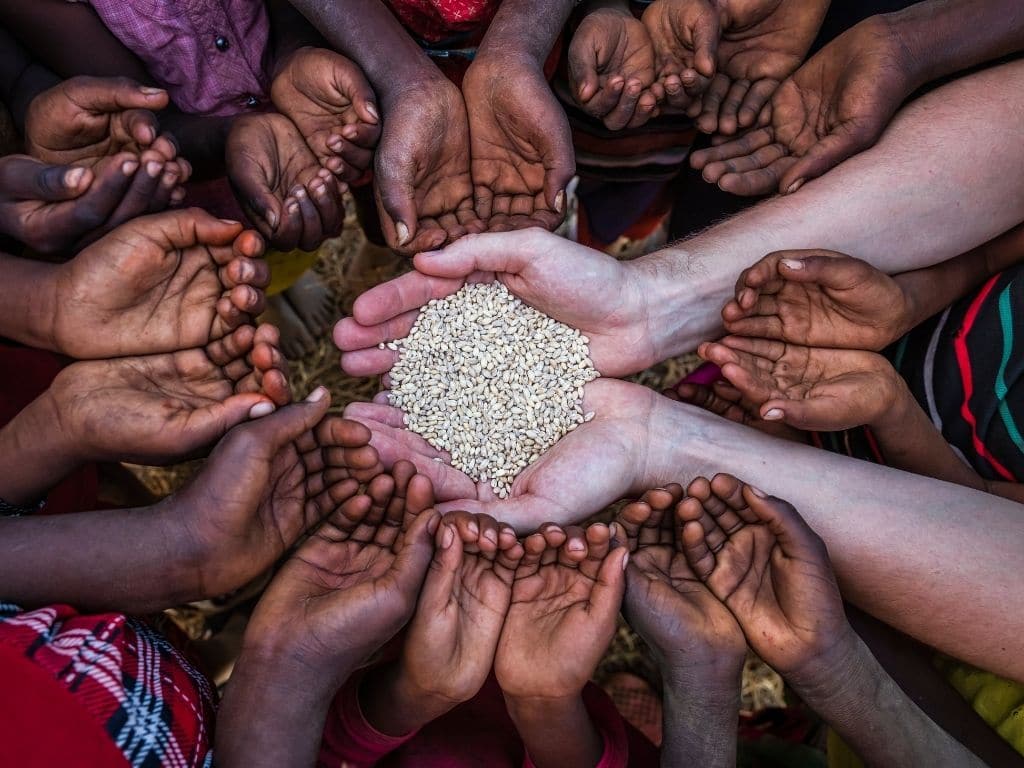
India is a food-insecure country, and climate change poses a major threat to its agricultural productivity. Increasing temperatures, water scarcity, and extreme weather events could all reduce crop yields and threaten the livelihoods of farmers. This could lead to social unrest and conflict, particularly in regions that are already experiencing high levels of poverty and inequality. Also, climate change-induced changes in ocean currents and temperatures could lead to the spread of invasive species and diseases, which could have severe impacts on the region’s biodiversity and food security.
[A study by the Indian Council of Agricultural Research (ICAR) in its Vision 2050 document warns that long-term food security is at serious risk from climate change, which could have a variety of crippling effects on agriculture. The country’s northern and peninsular regions could experience a major shortage of freshwater due to climate effects, which would exacerbate already-existing intra- or inter-state tensions and increase rivalry among consumers. The study shows a decline in irrigated wheat and maize yields by 5-10% by 2050. With the exception of Andhra Pradesh, Tamil Nadu, and Karnataka, where rain-fed rice output is anticipated to increase by 10–15%, yields will decrease by 15–17% in Punjab and Haryana, and by 6–18% in all other regions.]4
Thus, to ensure its food security in the face of climate change, India could invest in climate-resilient agriculture, including crop diversification, improved irrigation systems, and the development of drought-resistant crops. Additionally, India could work with other countries to address global food insecurity as a potential driver of conflict. This could involve supporting international initiatives to improve food production and distribution, and sharing best practices and technologies with other countries.
Energy Security:
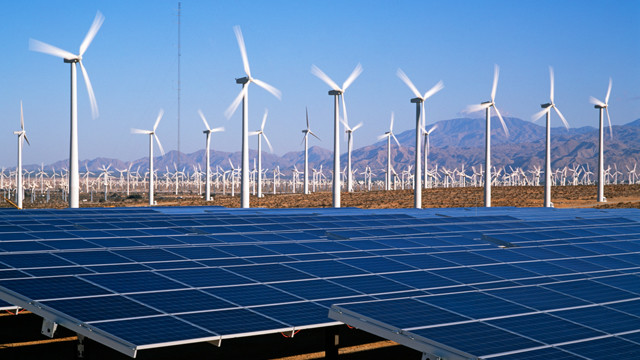
Energy security refers to the reliable and affordable supply of energy resources to meet a country’s needs. Climate change poses a significant challenge to energy security, as it affects the availability and accessibility of energy resources, particularly fossil fuels such as coal, oil, and gas. India, like many other countries, is heavily dependent on fossil fuels for its energy needs. In fact, India is currently one of the top emitters of greenhouse gases in the world, like China and the United States. This heavy reliance on fossil fuels has a number of negative impacts, including air pollution, public health problems, and environmental degradation.
However, India is also a country with abundant renewable energy resources, including solar, wind, and hydropower. The Indian government has recognized the importance of transitioning to renewable energy sources to address energy security concerns, as well as to reduce greenhouse gas emissions and meet its international climate commitments.
Some potential solutions and approaches that India could adopt to address energy security in the context of climate change include:
Increasing investment in renewable energy:
To achieve this goal, the government has implemented a range of policies and incentives to promote investment in renewable energy, including subsidies, tax incentives, and simplified regulatory procedures. The Indian government has launched a series of initiatives to reduce the country’s dependence on fossil fuels and increase its use of renewable energy sources. To address the climate change related challenges, the Indian government has made significant progress in reducing the country’s dependence on fossil fuels and increasing its use of renewable energy sources. [The government’s ambitious target was to achieve 175 GW of renewable energy capacity by 2022, including solar power (100 GW), wind power (60 GW), biomass power (10 GW), and small hydro power (5 GW).]5
[As of February 2023, India has already achieved a total installed renewable energy capacity of 174.53 GW, with 63.3 GW of solar power, 41.9 GW of wind power, 10.2 GW of biomass power and 4.93 GW of Small Hydro Power, indicating that the country is on track to meet its target.]6 The government has also launched various policy measures such as the National Solar Mission, the National Wind Energy Mission, the National Bioenergy Mission, and the National Small Hydropower Mission to promote renewable energy.
Improving energy efficiency:
Energy efficiency measures, such as building insulation, efficient lighting, and energy-efficient appliances, can help reduce energy demand and increase energy security. The Indian government has launched several initiatives to promote energy efficiency in buildings, transportation, and industry. [The Perform, Achieve and Trade (PAT) scheme, launched in 2012, has resulted in the total energy savings projection of about 26 MTOE (Million Tonnes of Oil Equivalent) and a reduction in CO2 emissions of 70 million tonnes by March 2023.]7 [The Ujala scheme, which was launched in 2015, has led to the distribution of more than 36.78 crore LEDs, resulting in energy savings of 47,778 Million kWh per annum and a reduction of 3,86 crore tonnes of CO2 emissions.]8
Encouraging decentralized energy systems:
Decentralized energy systems, such as off-grid solar power and mini-grids, can provide energy access to remote areas and help reduce dependence on centralized fossil fuel-based power systems. The Indian government has launched several programs to promote decentralized energy systems, including the Saubhagya scheme and the Deen Dayal Upadhyaya Gram Jyoti Yojana.
India has been working towards achieving energy security by promoting the development of decentralized energy systems. Some examples of decentralized energy systems in India are:
Solar Home Lighting Systems: The Solar Home Lighting System (SHLS) is a standalone photovoltaic system that can provide electricity to households in remote and off-grid areas. SHLS typically includes solar panels, batteries, charge controllers, and DC appliances like lights and fans.
Biogas Plants: Biogas plants utilize organic waste, such as animal dung, to produce biogas that can be used as a fuel for cooking, lighting, and small-scale power generation. Biogas plants not only provide clean energy but also help in waste management.
Micro Hydro Power Plants: Micro Hydro Power Plants (MHPs) utilize the flow of water in small streams and rivers to generate electricity. MHPs are ideal for remote and hilly regions where grid-based electricity is not feasible.
Wind Energy Systems: Wind Energy Systems (WES) harness wind power to generate electricity. WES can be installed in areas with high wind speeds and can be connected to the grid or used for standalone power generation.
Biomass Gasifiers: Biomass gasifiers convert biomass, such as wood chips, agricultural waste, and urban waste, into a combustible gas that can be used for electricity generation and cooking.
These decentralized energy systems are being promoted in India through various government schemes and initiatives such as the National Biogas and Manure Management Programme, the National Solar Mission, and the Ministry of New and Renewable Energy’s Off-grid and Decentralized Solar Applications Programme.
Strengthening energy storage infrastructure:
Energy storage systems, such as batteries and pumped hydro storage, can help integrate variable renewable energy sources into the grid and provide backup power during outages. The Indian government has launched several initiatives to promote energy storage, including the National Energy Storage Mission and the FAME II scheme.
Thus, to transition to a more sustainable and secure energy system, India could invest more in renewable energy sources, such as solar, wind, and hydro as it presently is doing. It could also implement energy efficiency measures, such as smart grids and building retrofits. Additionally, India could work with other countries to promote global renewable energy deployment, through initiatives such as the International Solar Alliance.
Disaster Response:
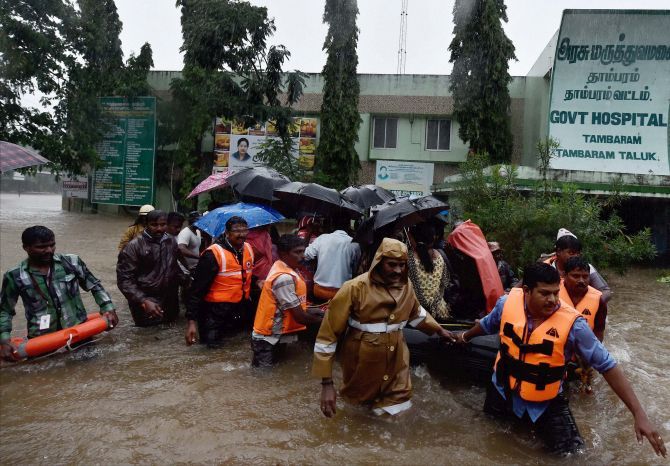
India is particularly vulnerable to natural disasters such as floods, cyclones, and droughts, which are likely to increase in frequency and intensity due to climate change. To improve its disaster response capabilities, India could invest more in early warning systems, emergency response teams, and disaster preparedness training for local communities.
Additionally, India could work with other countries to prepare for and respond to climate-induced disasters, by sharing best practices and technologies, and establishing regional disaster response frameworks.
In context to this, the Indian government has been investing in early warning systems for cyclones, floods, and landslides, such as the Doppler radar system, which can provide timely information about the intensity and path of a cyclone. Additionally, the government has set up a National Disaster Response Force (NDRF) to carry out rescue and relief operations during natural disasters.
Another approach is to strengthen infrastructure and build resilience to withstand natural disasters. This can include constructing buildings that are resistant to earthquakes, floods, and cyclones, as well as building robust road and communication networks that can withstand extreme weather events. The Indian government has launched the Pradhan Mantri Awas Yojana (PMAY) scheme, which aims to provide affordable housing to all the communities including those who are vulnerable in disaster-prone areas. Under this scheme, houses are built with reinforced walls and roofs, to withstand the impact of natural disasters.
Furthermore, there is a need to invest in post-disaster recovery and rehabilitation. The Indian government has been implementing several programs to provide immediate relief to affected communities, such as providing food and shelter. However, there is a need for long-term rehabilitation and reconstruction programs, which can help impacted communities recover from the impact of natural disasters. One such initiative is the [National Cyclone Risk Mitigation Project (NCRMP), which aims to provide cyclone-resistant infrastructure and enhance the capacity of local communities to deal with cyclones with the PPM formula, i.e. Prevention, Preparation, and Mitigation.]9
Thus, to effectively respond to the challenges posed by climate change, it is essential to have a comprehensive disaster response system in place. This includes investing in early warning systems, strengthening infrastructure, and building resilience, as well as implementing post-disaster recovery and rehabilitation programs.
By addressing these security risks posed by climate change, India can safeguard its national security and contribute to global efforts to mitigate the impacts of climate change. However, this will require a holistic and integrated approach to foreign and security policy that recognizes the interconnections between climate change and security. It will also require political will and international cooperation, as no country can address these challenges alone.
In conclusion, the intersection of climate change and national security poses significant challenges in the formulation of India’s foreign and security policy. By addressing these challenges through a multi-faceted approach that includes regional cooperation, climate-resilient agriculture, renewable energy deployment, and disaster preparedness, India can ensure its national security while contributing to global efforts to address climate change. The time to act is now, as the impacts of climate change are already being felt, and the security risks are only set to increase in the years ahead.
References
- https://openknowledge.worldbank.org/entities/publication/2be91c76-d023-5809-9c94-d41b71c25635
- https://www.internal-displacement.org/database/displacement-data
- https://idsa.in/system/files/jds/jds_9_1_2015_AbhijitSingh.pdf
- https://icar.org.in/files/Vision-2050-ICAR.pdf
- https://prsindia.org/policy/report-summaries/action-plan-for-achievement-of-175-gw-renewable-energy-target
- https://www.investindia.gov.in/sector/renewable-energy
- https://beeindia.gov.in/sites/default/files/press_releases/Brief%20Note%20on%20PAT%20Scheme.pdf
- https://www.pib.gov.in/PressReleasePage.aspx?PRID=1787594
- https://ncrmp.gov.in/



